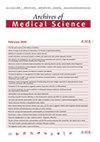Success in achieving LDL-C target values in a high-risk population in Slovakia: SlovakLipid retrospective study
IF 3
4区 医学
Q1 MEDICINE, GENERAL & INTERNAL
引用次数: 0
Abstract
Slovakia belongs among the countries with the highest cardiovascular mortality, nevertheless extensive data on the effectiveness of dyslipidaemia management is lacking. The aim of this study was to assess the implementation of European guidelines in the very high-risk population in Slovakia.We retrospectively analysed anonymised LDL C values of patients at very high cardiovascular risk gathered between 2017 and 2019 from collaborating laboratory with nationwide reach. CV risk was based on patient’s ICD diagnoses. LDL C target values were based on the 2016ESC/EAS recommendations, as well as current recommendations from 2019. Patients diagnosed with ACS, stroke, or overall very high-risk CVD were selected.A total of 220 657 LDL-C test results from 72 039 patients were processed. Only 8 9% of patients with ACS attained target LDL-C in a follow-up test each year. 6-9% of patients had LDL-C levels ≥ 4.9 mmol/l. Only 9-10% of patients with stroke achieved target LDL-C levels, and 7-8% had levels ≥ 4.9 mmol/l. In the very high CV risk group, only 7% of patients achieved target levels, and 7-8% had extremely high LDL-C levels ≥ 4.9 mmol/l. With the ESC/EAS2019 recommendations only 2-3% of patients in each group achieved target levels each year.Based on our results, we found that over 90% of patients with very high CVD risk do not achieve target LDL-C levels. This percentage is even higher when implementing the 2019 guidelines. These patients remain at high risk of subsequent CVD events and would benefit significantly from intensified hypolipemic therapy.斯洛伐克高危人群LDL-C目标值的成功实现:斯洛伐克脂质回顾性研究
斯洛伐克属于心血管死亡率最高的国家之一,但缺乏关于血脂异常管理有效性的广泛数据。本研究的目的是评估欧洲指南在斯洛伐克高危人群中的实施情况。我们回顾性分析了2017年至2019年间从全国范围内的合作实验室收集的心血管高危患者的匿名低密度脂蛋白C值。CV风险基于患者的ICD诊断。LDL C目标值基于2016年ESC/EAS建议以及2019年的当前建议。选择被诊断为急性冠脉综合征、中风或总体高危心血管疾病的患者。共处理了72039名患者的220657份LDL-C检测结果。在每年的随访测试中,只有8.9%的ACS患者达到了目标LDL-C。6-9%的患者LDL-C水平≥4.9mmol/l。只有9-10%的中风患者达到了LDL-C的目标水平,7-8%的患者LDL-C水平≥4.9 mmol/l。在非常高的CV风险组中,只有7%的患者达到了目标水平,7-8%的患者LDL-C水平极高≥4.9 mmol/l。根据ESC/EAS2019的建议,每组每年只有2-3%的患者达到了目标水平。根据我们的研究结果,我们发现超过90%的CVD风险极高的患者没有达到LDL-C的目标水平。在实施2019年指导方针时,这一比例甚至更高。这些患者仍有发生心血管疾病的高风险,并将从强化的低脂血症治疗中受益匪浅。
本文章由计算机程序翻译,如有差异,请以英文原文为准。
求助全文
约1分钟内获得全文
求助全文
来源期刊

Archives of Medical Science
医学-医学:内科
CiteScore
4.90
自引率
7.90%
发文量
139
审稿时长
1.7 months
期刊介绍:
Archives of Medical Science (AMS) publishes high quality original articles and reviews of recognized scientists that deal with all scientific medicine. AMS opens the possibilities for young, capable scientists. The journal would like to give them a chance to have a publication following matter-of-fact, professional review by outstanding, famous medical scientists. Thanks to that they will have an opportunity to present their study results and/or receive useful advice about the mistakes they have made so far.
The second equally important aim is a presentation of review manuscripts of recognized scientists about the educational capacity, in order that young scientists, often at the beginning of their scientific carrier, could constantly deepen their medical knowledge and be up-to-date with current guidelines and trends in world-wide medicine. The fact that our educational articles are written by world-famous scientists determines their innovation and the highest quality.
 求助内容:
求助内容: 应助结果提醒方式:
应助结果提醒方式:


